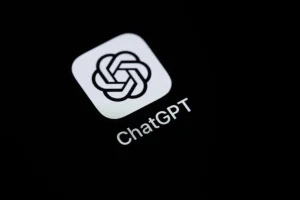AI: Unraveling the Language Code

For centuries, language has been a gateway to understanding human culture, yet its mysteries persist. For generations, scholars have delved into the complexities of linguistics, seeking to unlock its secrets. Today, AI ushers in a new era. This evolving technology may finally offer breakthroughs, offering a novel lens into the intricacies of language learning.
As artificial intelligence enters the linguistic arena, it offers unprecedented avenues to explore ancient puzzles. AI’s capabilities may reshape our understanding of how languages are learned and understood. Through various experiments and tools, researchers speculate whether AI’s potential could ultimately solve linguistic enigmas that have baffled us for ages.
The Emergence of AI in Language Learning
AI is not just transforming technology; it’s reshaping our understanding of language learning. In recent studies, AI models, known as LLMs, have been tested on ‘impossible’ languages, challenging them to mimic human language acquisition. These languages defy grammatical norms, offering a unique testing ground.
However, AI struggled with these artificial languages, particularly those distinct from natural human communication systems. Its failure in mastering such languages offers an exciting glimpse into the limitations and biases in AI’s language learning processes, questioning how AI perceives natural versus constructed languages.
AI’s Preference for Natural Languages
Interestingly, AI models often gravitate towards familiar, natural languages like English or Mandarin, suggesting innate biases towards human-like characteristics.
This trend highlights AI’s foundational design, which mirrors human learning patterns, easily adapting to familiar structures while avoiding the complex intricacies of artificial languages that lack such similarities.
By examining AI’s pitfalls in language learning, linguists can gather insights into human language acquisition, particularly in the formative years of childhood. This understanding could lead to better learning tools and educational methods, bridging the gap between technology and linguistic education.
Potential educational implications
These AI experiments extend beyond mere academic interest; they hold significant implications for educational practices.
Insights into AI and language learning could revolutionize modern education, offering new methodologies for language instruction that align closely with the evolving digital landscape.
By harnessing AI’s ability to process large volumes of data, educators can develop personalized learning experiences, fostering a more engaging and effective educational environment.
Microsoft’s Role in AI Development
Microsoft has been instrumental in advancing AI’s language capabilities. With updates to its AutoGen platform, developers can create AI agents that perform seamlessly across various environments, enhancing language processing functions.
These advancements empower developers, providing tools to refine AI’s decision-making processes, essential for complex tasks across industries.
The integration of memory boosts and asynchronous messaging in AI agents allows for improved communication, making these systems more reliable and versatile.
Challenges in AI Language Integration
Despite these advancements, integrating AI into language systems presents challenges. The intricacy of human languages and cultural nuances is a significant hurdle AI must overcome.
AI’s current inability to fully capture these complexities may hinder its effectiveness in real-world applications.
Further development is needed to enhance AI’s sensitivity to subtleties, ensuring it can function effectively in diverse linguistic contexts.
The Future of AI in Linguistics
AI’s trajectory in unraveling language mysteries holds promise for the future. As technology evolves, it may provide deeper insights into the cognitive processes of language acquisition.
With continued innovation, AI could uncover new theoretical frameworks, offering more comprehensive models of human and machine language learning.
This transformative journey could redefine our approach to linguistics, opening doors to unprecedented discoveries and applications.
Collaborative Efforts in AI and Linguistics
The collaboration between linguists and AI developers is crucial in advancing this field. Joint efforts can lead to breakthroughs that neither group could achieve independently.
Ethical Considerations in AI Language Use
While exploring AI’s language capabilities, ethical considerations must remain a priority. The potential misuse of AI in language translation and interpretation raises concerns of bias and accuracy.
Developers and researchers must work together to ensure AI systems are designed and implemented ethically, maintaining standards that prioritize fairness and transparency.
Inspiring a New Generation of Linguists
The fusion of AI and linguistics is inspiring a new generation of researchers and technologists. This intersection of disciplines offers fertile ground for innovation and exploration, challenging traditional methodologies and encouraging fresh perspectives.
By embracing the potential of AI in language studies, we can empower future linguists to pursue novel avenues of research.
The possibilities are endless, and the journey promises to be as fascinating as it is impactful.
AI’s impact on language learning is just beginning, promising a future where technology and linguistics unite. As AI evolves, it could transform how we understand and learn languages, bridging gaps in communication and knowledge.





